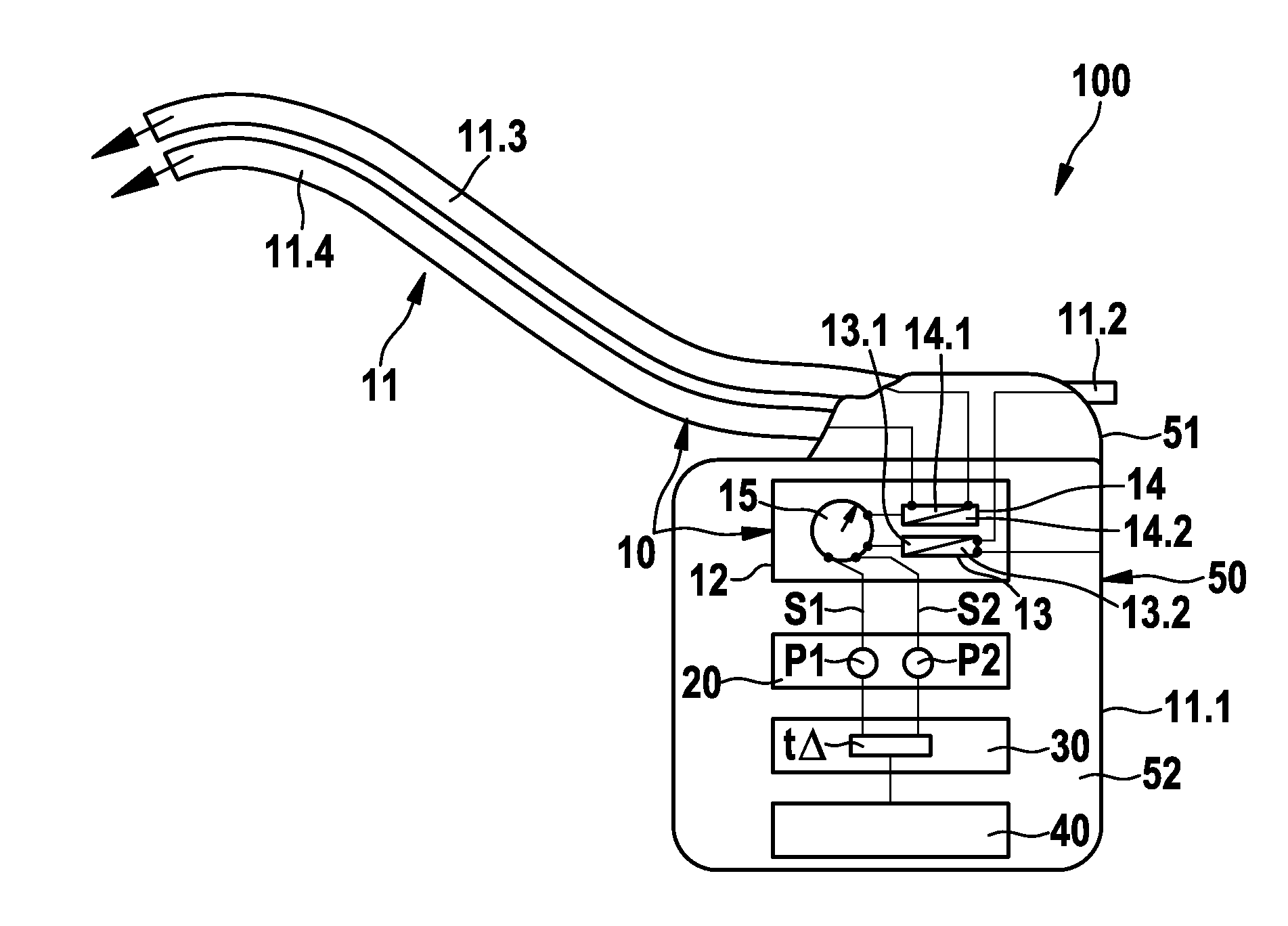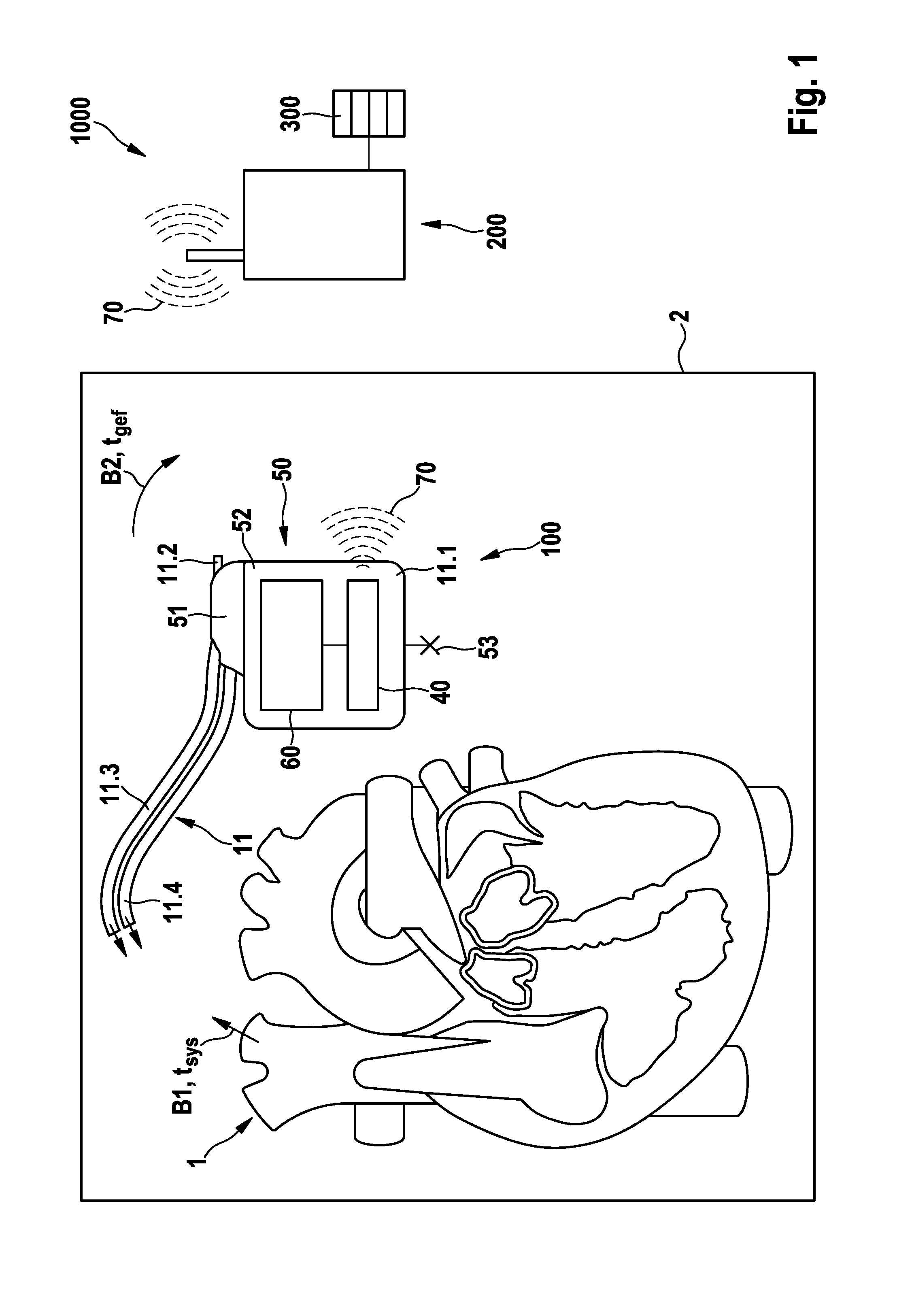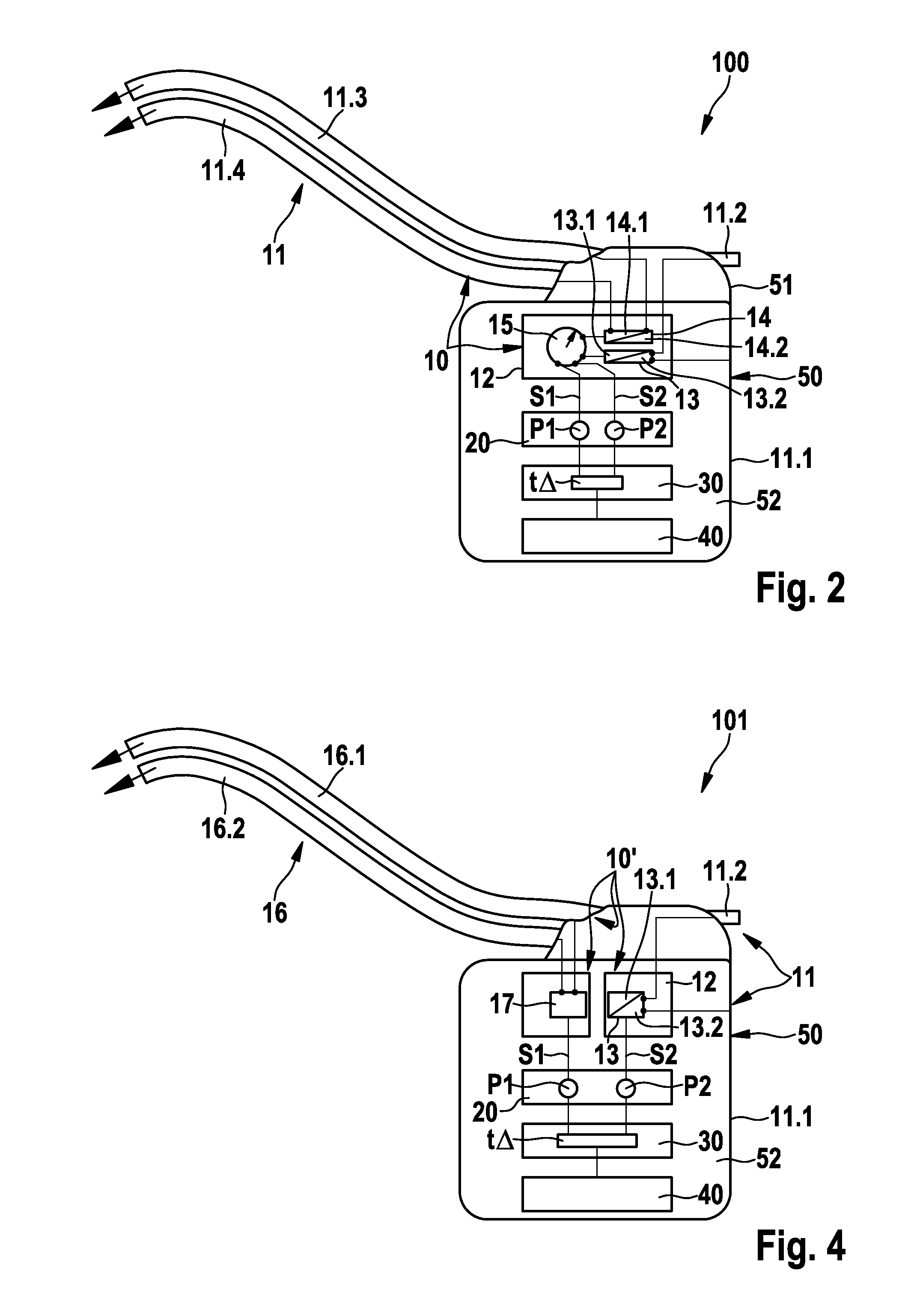Electromedical implant and monitoring system including the electromedical implant
a monitoring system and electromedical technology, applied in the field of electromedical implants, can solve the problems of inability to provide therapy options for patients without monitoring implants, disadvantages and at times cumbersome, and cardiac invasive systems are generally not suitable for patients without cardiac invasive systems, etc., to achieve low blood flow of coronary arteries, reduce vascular elasticity, and reduce pulse transit
- Summary
- Abstract
- Description
- Claims
- Application Information
AI Technical Summary
Benefits of technology
Problems solved by technology
Method used
Image
Examples
Embodiment Construction
FIG. 1 schematically illustrates an exemplary preferred version of a monitoring system 1000 including an electromedical implant 100, which is equipped to monitor a cardiac blood flow B1 (conceptually illustrated by an arrow), and an epithoracic peripheral blood flow B2 of a living being (also conceptually illustrated by an arrow), the living being preferably being a patient who may or may not have a diagnosis of cardiac insufficiency. Also conceptually illustrated are the heart 1 and the thorax 2 of the patient (the thorax being represented by the box 2 about the heart 1 and the implant 100), with the blood flows B1 and B2 being shown within the thorax 2. The implant 100 is preferably designed purely as a monitoring implant, in other words, it does not perform therapy. The implant 100 includes a housing 50 having a housing container 52, a header 51, and an electrode assembly 11 connected to the housing 50. The implant 100 is situated in the thorax 2 of the patient, subcutaneously in...
PUM
 Login to View More
Login to View More Abstract
Description
Claims
Application Information
 Login to View More
Login to View More - R&D
- Intellectual Property
- Life Sciences
- Materials
- Tech Scout
- Unparalleled Data Quality
- Higher Quality Content
- 60% Fewer Hallucinations
Browse by: Latest US Patents, China's latest patents, Technical Efficacy Thesaurus, Application Domain, Technology Topic, Popular Technical Reports.
© 2025 PatSnap. All rights reserved.Legal|Privacy policy|Modern Slavery Act Transparency Statement|Sitemap|About US| Contact US: help@patsnap.com



